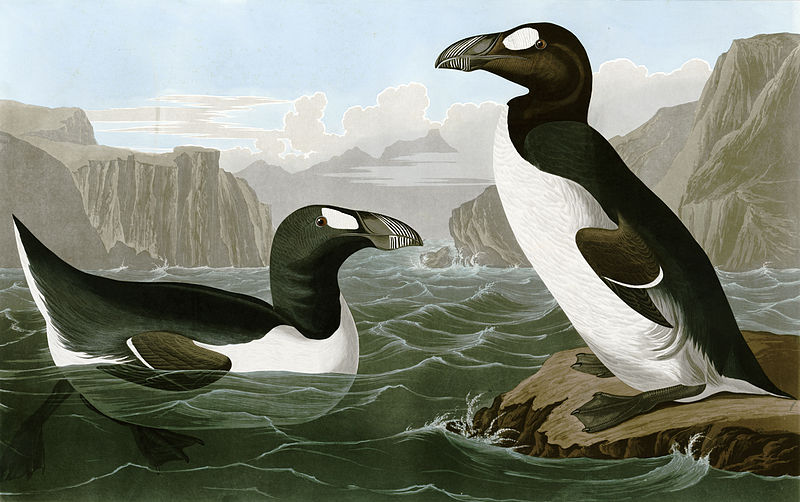Most of us realize now that the real history of our Thanksgiving holiday is rather convoluted and did not become so set in stone as an annual U.S. official holiday until about 150 or so years ago. But historians do tell us that the Pilgrims at the Plymouth Bay Colony in what is now Massachusetts celebrated, with their Native American neighbors, a Thanksgiving feast in the fall of 1621. The two surviving short accounts of that celebration mention two types of birds that made it onto the Pilgrim’s Thanksgiving table: wild turkeys and waterfowl. Apparently the bounty did not last all the way through the winter, as a rescue mission was sent out by the Pilgrims the following spring to none other than Damariscove Island. A year-round fishing community was already established there and the Damariscove fishermen sent a load of cod back with the rescuers and helped the Pilgrims to survive.
We were thinking about what birds might have been around in 1621 in this part of what is now Maine that both Native Americans and the newly arriving European settlers might have seen and/or captured and eaten. Wild turkeys, if they occurred, would have been an obvious bird to eat. Some historical accounts describe wild turkeys in very southern Maine but it is not known if they occurred beyond what is now York and Cumberland counties. Turkeys were such a large and popular food source that their populations were quickly decimated wherever people settled, and so they disappeared from Maine very early on, perhaps by the early 1800s. The people of Maine in the 1600s would be shocked to see the abundance of wild turkeys we have now in the area!
Another large bird that was likely in Maine during the 1600s was the sandhill crane. Early accounts talk of both cranes and herons, indicating that the observers differentiated the two (today people often use the term “crane” to describe the great blue heron). Cranes, like turkeys, would have been a bird that was prized for the table because of their large size, so they, too, disappeared from the state, probably even earlier than wild turkeys. Today, sandhill cranes are slowly increasing in numbers in Maine after the first documented nesting a few decades ago.
Perhaps a fish and meat drying shed on Damariscove Island or Monhegan Island in the 1600s would have had in them several bird species that are not only gone from Maine but are gone from Planet Earth. It’s hard to believe now but Maine once had a bird on its shores, related to the puffin but three times the size, and flightless like a penguin. It was called the great auk, and those early fishermen on Damariscove Island were certainly familiar with it. Probably by the late 1700s it was already very scarce, and the last known living individuals were killed in 1844 on island off Iceland.
The mysterious Labrador duck, a small black-and-white seaduck that occurred in winter as far south as New England, probably was found along the Maine coast in the 1600s. The Labrador duck was extinct by sometime in the 1800s but virtually nothing is known about its habits and breeding grounds (there are only a little over 50 specimens in existence) so nobody knows what caused its extinction. Some accounts say that the meat of the Labrador duck was not very palatable, so perhaps it would not have been a preferred Thanksgiving meal of earlier settlers or Native Americans in those times?
At this Thanksgiving time, it’s important to remember the lost birds, like the great auk and the Labrador duck, while also giving thanks that birds like the wild turkey and the sandhill crane and many others have been saved by timely human intervention, by past and present bird conservationists.




























.png)
.png)

